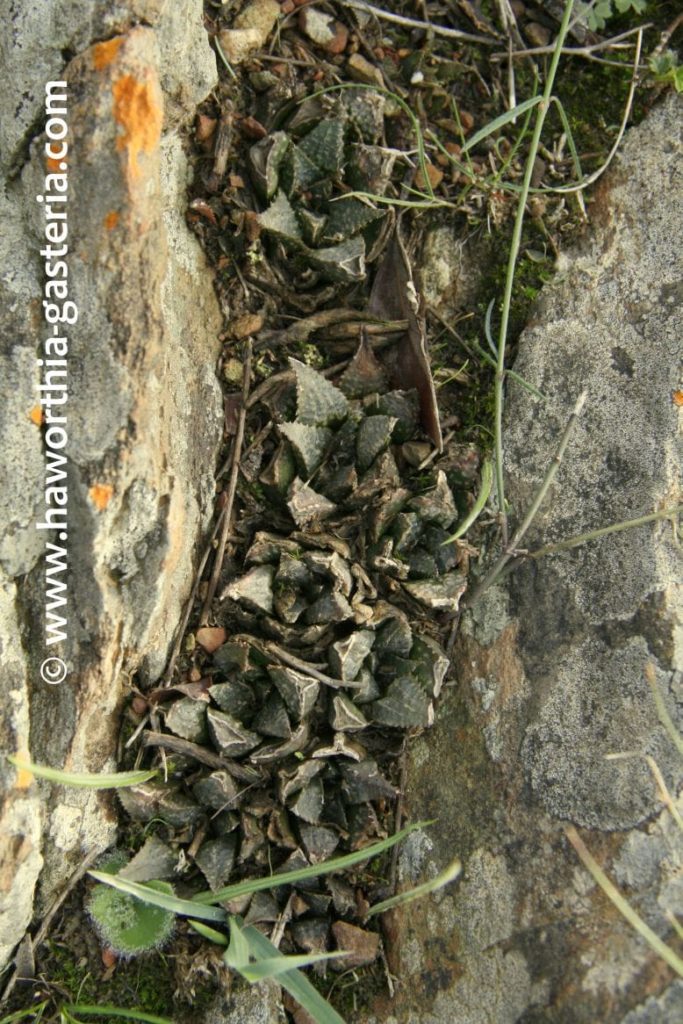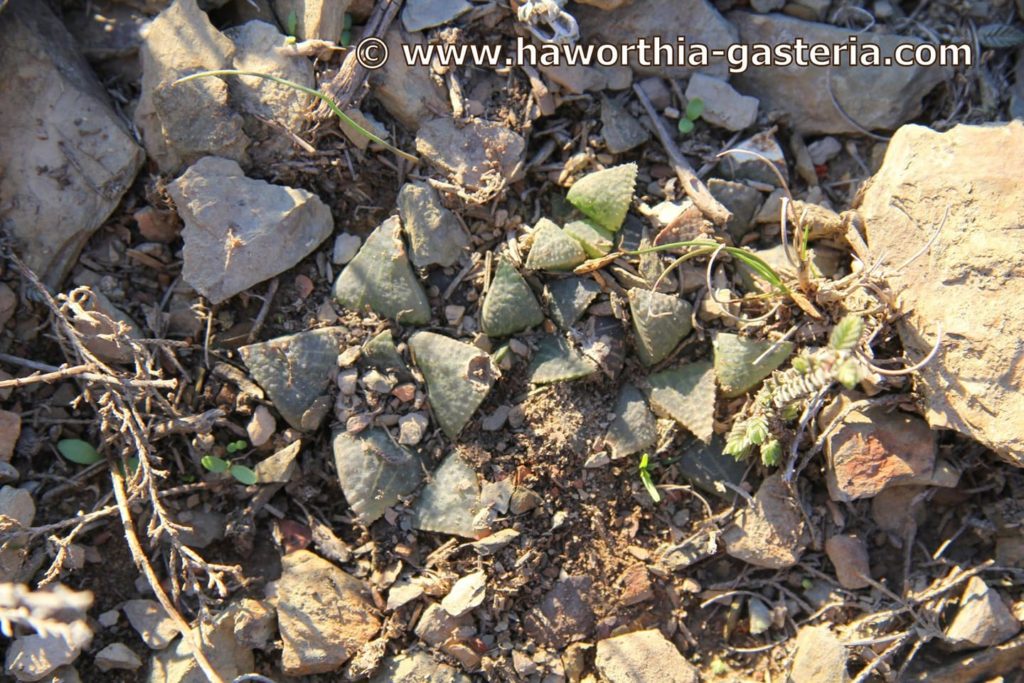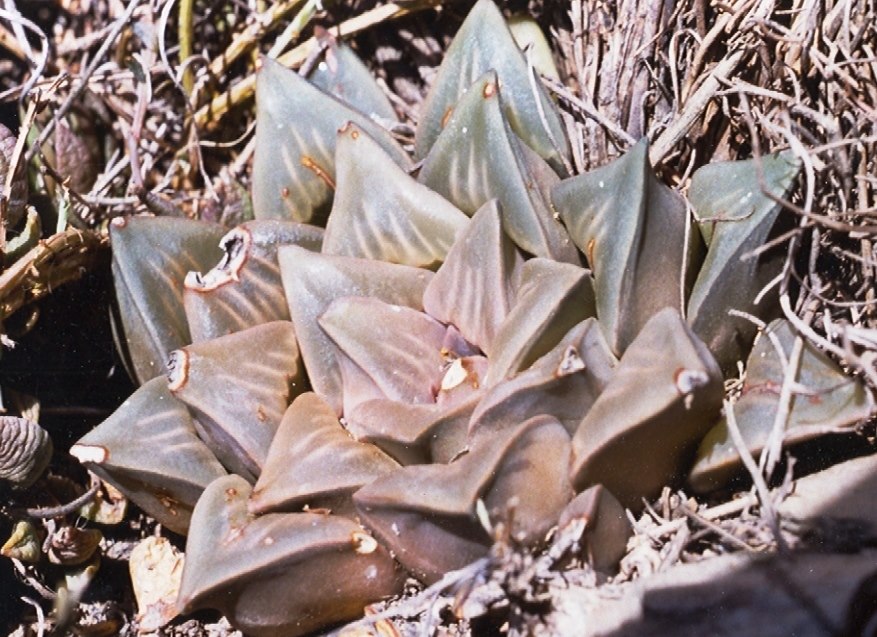75. 2019.8.8, MBB7954 – Skipping 9 populations to get south of Stormsvlei and to the farm Volmoed. It is November. I’ve tried to limit the number of pictures; but there are so many interesting variants. I wish I could show them one by one. They need to be looked at one by one.
Jakub Jilemicky – I remember seeing here a few scabrid clones.
Jakub has made such a valuable contribution. His localities are not the same as mine. He exposes the weakness in all our efforts. Lack of knowledge. Drawing conclusions from inadequate data. Not thinking and not asking questions. If we all honestly decided to sincerely think through this “species” problem and strive to arrive at a common agreed objective, we might be able to reach a solution. We will not do this while classification and revisions are presented and owned by individuals in a climate that does not value truth. Nor while fundamental principles of science i.e. “universality”, “communality”, “no personal gain” and “organised scepticism” are ignored.
There are absolutely mirabiloid genes (if you can call them that) in this population. Just out of sight in one of those little depressions is a mirabilis population that links the maraisoid mirabilis to the badiod and possibly with the muticoid. All this is supporting the hypothesis that there is a single gene pool and one species only? Mirabilis is in this area with the 9 mutica populations I mention – in not a single case do they occur together???? The reason seems to me very “simple”. The difference genetically is so small that there is a subtle element that determines the domination of one over the other in any particular habitat niche?
It is also just a single plant pictured, and as with mutica and retusa, one has to carry images of many plants from many populations to arrive at a valid opinion. I said badioid when I really mean all the mirabiloids in that Napier area. We are led to think in a reductionist manner and this is what enlightened thinkers try to explain to us when they use the word “holistically”. I crudely use the metaphor of the baboon picking cobs because I know what it means to go into the field and see a population of variants and say to what it relates to. Readers tend to forget what has gone before. What is the hypothesis we are looking at? A single gene pool with each population and plant significantly a part of a whole. A principle of classification is that it covers all the parts and not just bits of it. Now we go exploring and anything different is seen as new, instead of asking the question of how does it fit with or help explain what we already know.
A recent treatment of Haworthiopsis is rather depressing as it follows the tired concept of a flat evolutionary tree growing out of a two-dimensional bed of primordial mud. It is only the late Koos Roux as the botanist he became from a history as a horticulturalist and naturalist, who has ever expressed to me the same view I have, i.e. the pyllogram that emerges from DNA analysis by Bayesian statistics and its interpretation, is a two dimensional one and cannot express the true reticulate nature of change (is evolution the same thing?) and relationships. Whether the sequencing is past technology or new generation sequencing, this issue remains the same. If Haworthia is to be treated in the same way as Haworthiopsis the result will be comparable to the point at which Smith retired, confounded by the new facts of nomenclatural obligations both real and perceived. A dart board will be used to identify varieties in the continued absence of a species definition that is true. The sad fact is that plant taxonomy is very largely a subjective process. In the Haworthia groups this works for Tulista and for Haworthiopsis (unless one starts imagining subgroups and what purpose do those actually serve?). In Haworthia stricto there is just going to be the usual interpersonal put-down and strife.
76. 2019.8.10, MBB7075 – NE Volmoed between Riviersonderend and Stormsvlei. H. otzenii was described from near here, from a population no longer in existence.
Perhaps one can ask if anything has been proved by these posts to date and since about May? The argument has not just been about Haworthia retusa and its allies, but about classification and science generally. Is it my function to resolve these problems or just to suffer under them?
We have looked at (a guess) about 80 populations. There are possibly 400 more to consider. So we have seen about a fifth or much less of what there is, and I am not counting pictures I do not have from pre-digital years. Is all this seen so far in memory?
Tinus Potgieter asks “If we all honestly decided to sincerely think through this “species” problem and strive to arrive at a common agreed objective, we might be able to reach a solution.” “How to get to this point?”
Perhaps by recognition of the problem? When the idea of the national species list first arose, I was asked by PRE “Whose revision should we use, yours or that of Col Scott?”
In present time all hope is attached to “next generation sequencing” while faith lies in existing sequencing results. I have suggested that sequencing is flawed because it ignores the space/time nature of species, and that a definition can and should be derived outside of belief in an apparent objective way of determining them.
While collectors and the societies that represent their interests blindly put their faith in science, it is unlikely to happen. As in Haworthiopsis, some half-baked solution will be dressed up in sophisticated nomenclature. The language of DNA sequencing, Bayesian statistics and phyllograms will be added to trump and ridicule practical field observation and common sense. True or not will not be a serious consideration.



















































